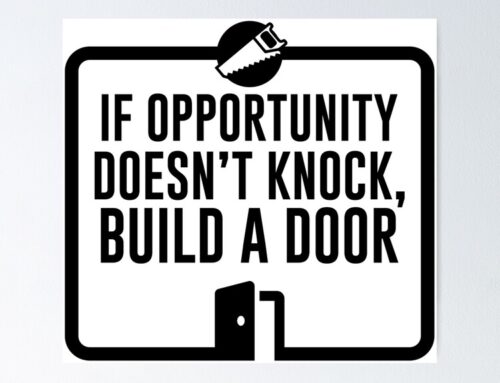Rising Above the ‘Noise’ of Digital Marketing With Direct Mail
B-to-B and B-to-C Boundaries Are Blurring. Here’s What It Means for Marketers
The days when marketing was seen as a strictly creative exercise are long gone.
For many years, business-to-business marketing largely operated in the shadow of its higher-profile consumer-facing cousin.
Of course, b-to-b marketing mattered. But it typically lacked the scale, glamour and creativity of business-to-consumer marketing. If one is asked to name a cutting-edge campaign, the ones that come to mind are from iconic consumer brands such as Nike, Target and P&G, or the big tech firms like Apple, Amazon and Google.
Today, however, the distinction between b-to-b and b-to-c is much less important. From a marketer’s perspective, many of the same principles, objectives and strategies now apply equally. And b-to-b is rapidly catching up in terms of customer focus, creative innovation and digital savviness.
There are four areas in particular that illustrate this convergence of b-to-b and b-to-c marketing. These universal principles also get to the heart of what it means to be a growth marketer today.
1. Data shows the way
Yes, marketers still rely on their gut. And they always will to some extent. But advances in data and analytics have brought far more science to the art of marketing. And while it may have been b-to-c that led the way in areas like data-driven personalization at scale, many b-to-b firms are now also making great strides.
Take American Express, which uses data analytics to support its marketing to both consumers and corporate clients. The increasing importance of the latter was made evident when the company launched American Express Advance, a state-of-the-art predictive analytics marketing platform for business clients.
Creating a data-driven marketing capability is a question of technology on the one hand and culture on the other. And b-to-b marketers now have a growing array of data insights tools at their disposal, including Bombora and 6sense. However, the tech does need to be complemented with a team culture in which marketers are comfortable making decisions based on data insights—and have the skills to do so.
2. Marketing is equal parts business and creative
The days when marketing was seen as a strictly creative exercise are long gone. Today’s CMOs are increasingly held accountable for business results. That changes the skills needed to succeed—you have to be equal parts right brain and left brain.
No CMO wants their best people spending so much time trawling through source data or performing routine tasks.
Put simply, you need to understand a profit and loss statement if you’re going to be responsible for driving growth. You also have to communicate in terms they’ll understand, getting away from that notion that marketers and business stakeholders are speaking different languages. Being able to learn “their” language while still articulating “our” value is so important.
Peloton CMO Dara Treseder made a similar point recently. She stressed the importance of being a business leader first and foremost, but with a functional discipline in marketing and communications. That, incidentally, ensures the business can call on a more diverse array of leadership talent and helps lay to rest the idea that only the CFO can move into the CEO position.
3. Technology and automation increasingly underpin everything
Marketing technology (mar tech) is becoming ever more fundamental. And it continues to dominate spend, accounting for over a quarter (26.6%) of total marketing budgets, according to Gartner.
Modern mar tech is also an important enabler of new ways of working, including remote collaboration. For obvious reasons, the ability to work smarter as part of a dispersed team is crucial right now, when so many traditional face-to-face working practices may not come back in the same way and the increased globalization of roles.
In my own experience, implementing a work management platform really did transform how our team worked, cutting time to market by as much as 25%. It helped us collaborate differently, meaning we needed fewer calls and emails. It also provided real-time updates and allowed us to create more consistency in our processes.
4. Promote a culture of collaboration and inclusivity
Pre-pandemic, it was chiefly intellect that set marketing leaders apart. Post-pandemic, the leaders rising to the top will be those who combine their expertise with empathy and compassion. An important part of this is avoiding the so-called ivory tower syndrome.
As you grow as a leader, never lose sight of the day-to-day work that goes into delivering on the team’s strategic business, and creative goals. That’s so important for developing processes and procedures that are fully interconnected and truly work for the people intended to use them.
Another critical element is building a diverse team with a culture of inclusion. You want diversity to ensure your team offers a range of viewpoints that reflects who your customers are. But you need to complement this with an inclusive environment in which everyone feels they have a voice and can explore creative ideas and challenge entrenched orthodoxies.
From cost center to growth engine
These four principles are fast becoming must-haves for successful marketing teams. And for all the disruption we’re experiencing right now, they promise to make the next few years an exciting time for this industry.
As the b-to-b and b-to-c disciplines converge, forward-thinking marketers will look to take data analytics and martech automation to the next level, build cultures of inclusion and data literacy, and transform their marketing functions from a cost center to an engine of business growth.
Article by Joseph Taiano
_________________________________________________________________

206-391-5682
i2i@i2idirectmarketing.com
www.i2idirectmarketing.com
“…all deliveries GPS tracked…”





